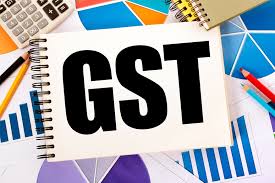ITR Filing FY 2020-21: Last date, list of documents required to file an Income Tax Return
ITR Filing 2020-21: The last day for filing your income tax return (ITR) for the financial year 2020-21 (FY21) is on December 31. Generally, the deadline for filing of ITRs is on July 31 each year however this year, the last date has been extended twice due to a number of technical issues on the new ITR portal
The Income Tax Department has been issuing reminders to taxpayers through various platforms such as SMS, emails, social media and more, urging them to file their ITRs at the earliest and not wait for the last date.
\Hope you know that ITR is an important document for any loan processing. So, why delay? File your ITR today! Due date for filing Income Tax Return for AY 2021-22 is 31st December, 2021.” Income Tax India tweeted earlier today.
If you are yet to file your ITR, you only have a few days left to do the same. However, it is generally advisable to file your ITR as early as possible to avoid any last-minute rush, glitches or errors.
Here’s a list of key documents that you need to be equipped with to file your correct income tax return:
1. Form 16
Form 16 is a key document for filing the ITR for all salaried people. It is issued by an employer to its employees and is a mandatory document. Every employer is liable to issue Form 16 to all its salaried employees from whom it has deducted income tax. Form 16 is a tax deducted at source (TDS) certificate and carries the details of the salary paid to the employee and their respective TDS details.
Now, this document consists of two parts – Part A and B. Part A is the portion that consists of the income tax deducted by the employer in the financial year. Separately, it has the Permanent Account Number (PAN) details of the employee and the Tax Deduction Account Number (TAN) of the employer. Part B of Form 16 includes the break-up information of employee’s gross salary.
2. Interest income certificates
Apart from the salary income, an individual generates income from various interest investments such as savings account deposits and fixed deposits (FDs) from banks and post offices. These financial institutions provide interest certificates/bank statements to their depositors for the same. An individual can claim deduction under section 80TTA of the Income Tax Act on the interest earned from their savings account held with a bank/post office.
3. Investment proofs for tax saving
For individuals who are could not submit their actual tax-saving investment proofs to their HR/Accounts department during the given time period in the previous financial year, they have to declare and submit the same directly to the I-T Department for claiming tax deductions.
These include receipt of life insurance (LIC) premium paid, receipt of medical insurance, receipt for investment in Public Provident Fund (PPF), 5-year FD receipts, mutual funds investment (ELSS), ULIPs, NSC, home loan repayment certificate/statement, donation paid receipt, tuition fee paid receipt etc.
The maximum amount that can be claimed under Section 80C is Rs 1.5 lakhs while an individual can claim a deduction of Rs 25,000 under section 80D on insurance for self, spouse and dependent children. An additional deduction for insurance of parents is available up to Rs 25,000, if they are less than 60 years of age. If the parents are aged above 60, the deduction amount is Rs 50,000.
4. Form 26AS
The Form 26AS is an annual consolidated tax statement generated by the I-T Department. It can easily be accessed from the income-tax website by all taxpayers using their PAN. It contains the amount of the TDS of the salaried class and taxes paid during the financial year (in case of self-employed or businessmen).
While filing the ITR, taxpayers can refer to their Form 26AS and tally it with their Form 16 for the amount of taxes they paid to the treasury of the central government.
Download our App to get knowledge updates: https://play.google.com/store/apps/details?id=com.app.gstmitra




Comments
Post a Comment